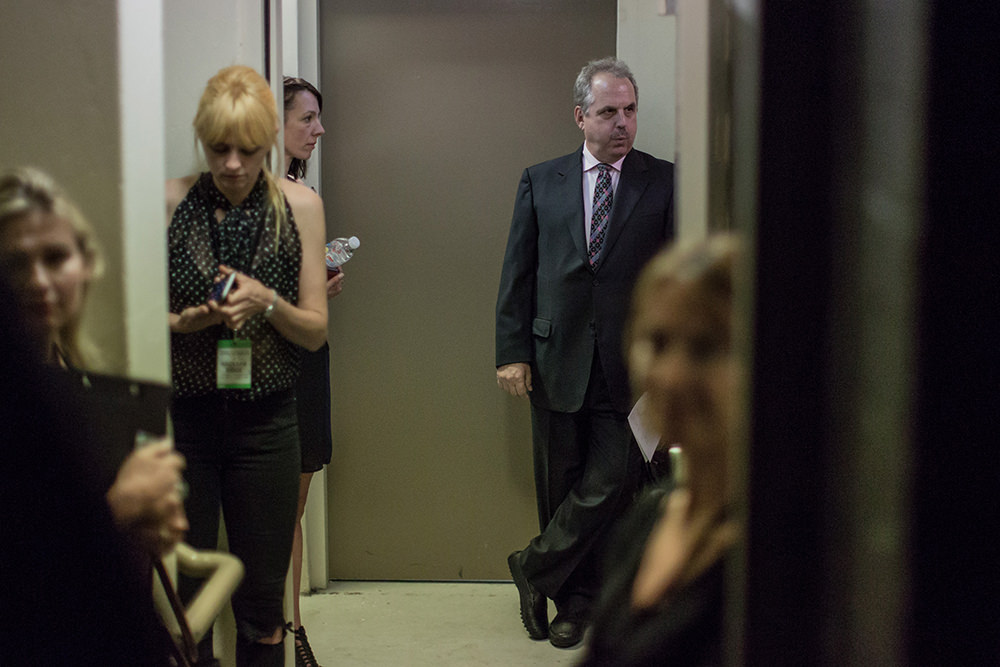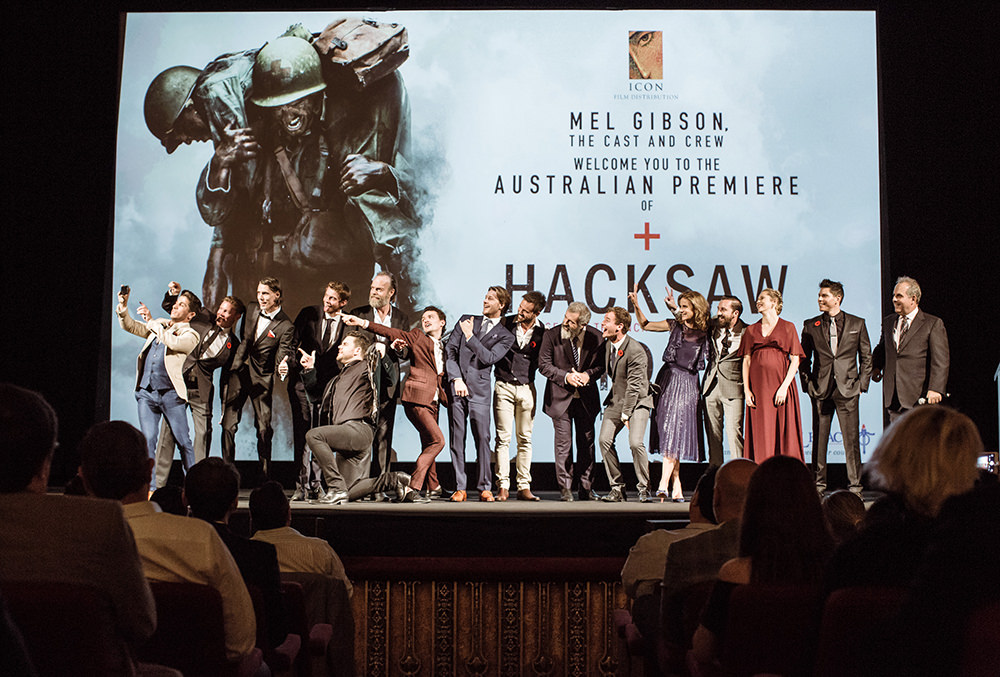Hacksaw Ridge: between indie and franchise
Producer Bill Mechanic reveals why films like Hacksaw Ridge are “pretty impossible” to get made and the Australians that made it happen.
 Bill Mechanic/Maria Boyadgis
Bill Mechanic/Maria Boyadgis
Producer, Chairman and CEO of Pandemonium Bill Mechanic says films like Hacksaw Ridge, which straddle the divide between low-budget indies and $200 million franchises, are a “vanishing breed” and increasingly difficult to finance.
More than two decades ago, when Mechanic was CEO of Fox Filmed Entertainment, he oversaw the production of another Mel Gibson-directed film Braveheart.
Comparatively, even with the 23-year time difference, Hacksaw Ridge “is 50% less expensive than Braveheart”. And yet, if it weren’t for Australian government subsidies, it would not have made its World Premiere at Venice Film Festival over the weekend.
“A movie this size, we’re a vanishing breed,” he says.
“This kind of movie is pretty impossible to get made today because you’re not big enough to be the 100 million or 200 million movie that’s going to spawn sequels and be presold, and you’re not like an ant – you’re not so small that you’re not bothering anybody.
“That in-between (space), it used to be a soft spot, but now it’s an invisible spot, and very, very hard to do.
“This picture could not have gotten made without bringing the budget down to where the perceived risk level was acceptable to financiers to finish off the funding.”
That was done thanks to a combination of Australian state and federal subsidies. “The film would not have been made without being financed with the Producer Offset,” Mechanic said, referring to the Screen Australia-administered refundable rebate for producers of Australian feature films.*
Gibson told Deadline at Venice Film Festival how they: “got some good breaks because it was a totally Australian film, and a good rebate.”
“They had a very good plan there. Filmed in New South Wales. Screen Australia and all that stuff. The exchange rate for the U.S. dollar was good at the time, and I think we locked in at about 72 cents on the dollar and took a $27 million budget and turned it into a $40 million budget,” Gibson added.
Hacksaw Ridge marks Gibson’s return to directing and is based on the life of US World War II soldier Desmond T Doss, the first conscientious objector to be awarded the Congressional Medal of Honor.
It made its world premiere at Venice Film Festival over the weekend, where The Guardian gave it four stars saying Gibson “absolutely hit Hacksaw Ridge out of the park”, while Variety noted it has a “good chance of becoming a player during awards season”.
Variety’s Owen Gleiberman also mulled over the film being an act of atonement for Gibson, who had a public unravelling off-screen following Anti-Semitic comments and leaked phone conversations.
It was one of the reasons Mechanic decided to film Hacksaw Ridge in Australia.
For Mechanic, Gibson has long-been the best director for this film. Gibson was offered the job back in 2002, and again in 2010, but both times he passed. When finally he came on board in 2014, it only cemented Mechanic’s belief Australia would be the right location.
“One, I thought it would be good for him to come back home and that it would be a good environment, a welcoming environment for him,” he says.
“(And two) I didn’t know what kind of subsidy we would get, but that we would get a subsidy out of Australia.”
With Gibson signed on, they did a tour to Australia to try and find the escarpment that would double for Okinawa and the location of the film’s title.
“We went to three of the states and looked at pictures from another two, to try and figure out where we would shoot and started interviewing Heads of Departments, some of whom had worked with Mel 30 years earlier on the Mad Max’s,” he says.
In the end Hacksaw Ridge settled on NSW, with the state government estimating before the shoot that the film would bring in more than $26 million in production expenditure across Sydney and the state.
 Mel Gibson with cast and crew on stage at the Australian premiere/Maria Boyadgis
Mel Gibson with cast and crew on stage at the Australian premiere/Maria Boyadgis
With so many Australians in the cast and crew, Gibson and Mechanic are both calling Hacksaw Ridge an Australian film, despite its American narrative.
In the cast, aside from Vince Vaughn and Andrew Garfield, the credits are packed with familiar Australian faces, from Ryan Corr to Rachel Griffiths to Hugo Weaving.
Emerging filmmaker Beth Armstrong was selected for a director’s attachment to Gibson as part of Screen Australia and the Australian Director’s Guild (ADG) industry incentive program.
And although the screenplay was originally written by Braveheart’s Randall Wallace and then The Pacific’s Robert Schenkkan, it was prolific Australian screenwriter Andrew Knight who Mechanic brought on to work on the final stages of Hacksaw Ridge.
“There are very, very few people who aren’t Australian or Kiwis on the picture, so we are an Australian picture,” Mechanic says.
Teresa Palmer, who plays the love interest of Garfield’s Desmond T Doss, Mechanic met on Pandemonium’s 2:22 – which was filmed across New South Wales and in Sydney’s Fox Studios. The writer, director and co-producer of 2:22, Paul Currie, also co-produced Hacksaw Ridge, as well as Mechanic’s other Australian-filmed feature The Moon and the Sun.
Mechanic’s history Down Under extends further than that. While at Fox Filmed Entertainment he saw first-hand at the quality of work in Australia and what the crews here could achieve.
“I did some films with Peter Weir but also particularly the Baz (Luhrmann) films and specifically more Moulin Rouge!, you knew the films were crewed properly,” he says.
“These were world class people, so it was really just a matter of who are they and how do you move from good to better to best.”
Hacksaw Ridge releases in Australia on November 3 through Icon Film Distribution.
*The story was updated on September 12, 2016 after the producer contacted The Screen Blog specifying they had benefitted from the Producer Offset. The previous version, published September 5, stated the producer declined to specify which State or Federal subsidies enabled Hacksaw Ridge to be financed.

What to read next
Writer/director/producer Rolf de Heer on the evolution of the Australian screen industry, his advice for aspiring filmmakers and his unique writing process.
15 Feb 2017
Caris Bizzaca